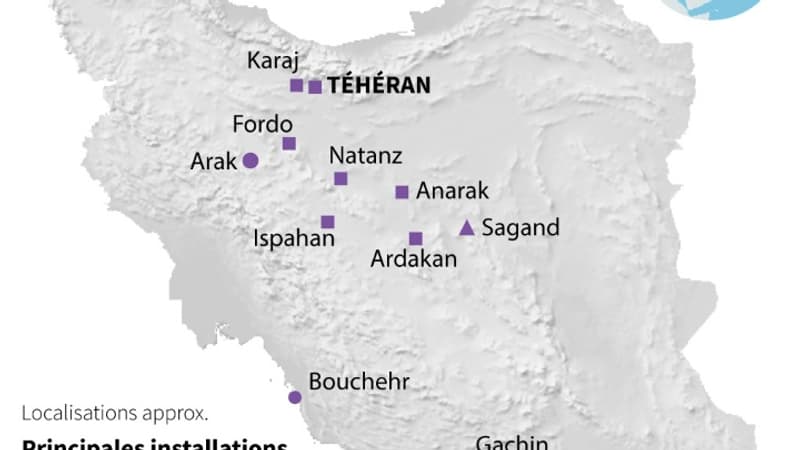Israel has led dozens of strikes on Iranian soil this Friday, June 13, with the aim of stopping the Tehran nuclear program, which has experienced a rapid development in recent months. Senior military officials of the Islamic Republic were killed and at least fifty people were injured, including women and children, reports Iranian state television.
This attack, which has increased the price of hydrocarbons, occurs as a new cycle of Iranian nuclear negotiations will take place on Sunday between the United States and Iran.
The fear of an imminent strike of Israel has been growing for a few days. Tel Aviv believes that the Iranian nuclear program threatens its safety and has already carried out numerous operations, including sabotage or directed murders, to try to stop it.
Donald Trump said Thursday that he didn’t want this offensive.
Iran is close to nuclear weapons
The Islamic Republic has intensified its nuclear program since 2018 and the withdrawal of Donald Trump of an agreement that is supposed to supervise Iranian atomic activities in exchange for raising international sanctions. Recent discussions allocated to achieve a new agreement.
Iran denies wanting to acquire the atomic weapon and claims to continue only a civil nuclear program. However, experts believe that the country “is a state of the nuclear threshold.”
Tehran had mid -August for a total uranium stock enriched with 5.751.8 kg, 28 times the limit authorized by this pact known to the acronym JCPOA, according to the latest report by the International Atomic Energy Agency (AIAA).
Of this total, its reserves of material enriched at 60%, about 90% necessary to develop an atomic weapon, were located 164.7 kg, enough to produce almost four pumps, according to the definition of the UN body.
Uranium enrichment activities in Tehran are particularly analyzed. Specifically, enrichment is “a decisive phase in the production of fuel for nuclear reactors” according to the site of knowledge of energy, which specifies that it is “a sensitive phase from the point of view of safety and non -proliferation.”
Natanz target site
The existence of at least two enrichment sites is attested. The best known thing is that of Natanz, in the center of the country, already attacked by Sabotage in 2021.
He was attacked “several times” this Friday, according to Iranian state television that showed a thick black smoke out of the installation. The Israeli army says in X that “the underground area of the site has been damaged.”
Another underground factory was built in Fordo, still in the center of Iran. This is where uranium particles enriched in 83.7% were detected at the beginning of 2023, a level close to the 90% threshold necessary to make a nuclear weapon. Iran had invoked “involuntary fluctuations” during the enrichment process.
The fordo site, more difficult to reach because built at 1 kilometer underground, would not have been damaged by strikes according to the IAEA.
In addition, in Ispahan, a conversion plant, industrially tested in 2004, makes it possible to transform the “yellow cake” (concentrated uranium mineral powder extracted from the Iranian desert mines) into tetrafluoruro and then into uranium hexafluoride (UF4 and UF6). These gases should be introduced in centrifugal to produce enriched uranium.
This site would not have been affected according to the AEIA.
A nuclear energy plant and projects with Russia
Iran has a nuclear energy plant, in Bouchehr on the edge of the Persian Gulf, built by Russia that also provides its fuel. It began operating in September 2011 at low speed before being connected to the electricity network the following year.
Moscow had resumed in 1994 the construction of this site with a power of 1,000 megawatts, initiated by the Germans before the Islamic Revolution of 1979.
Other reactors are under construction with the help of Russia in Darkhovin in southwest Iran (central of 300 megawatts) and Sirik, near the Ormuz Strait, (complex of four electric plants for a total of 5,000 megawatts).
Source: BFM TV


